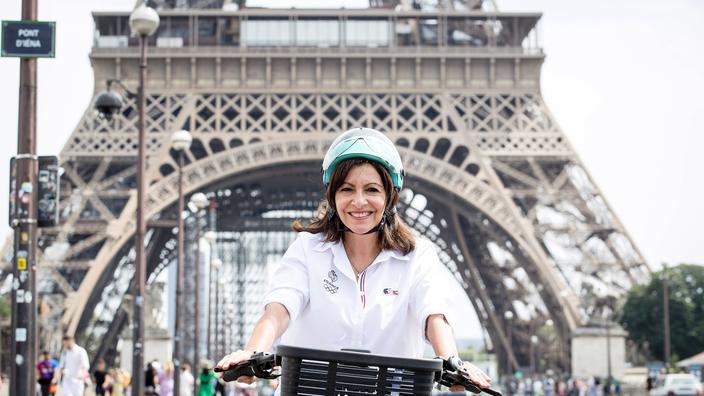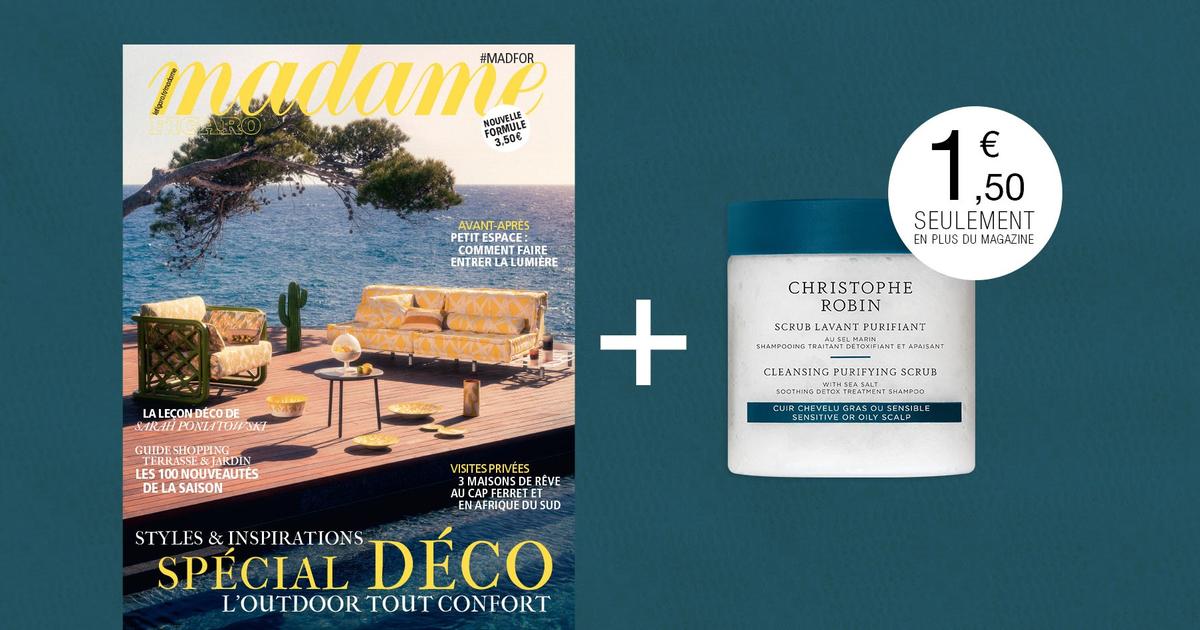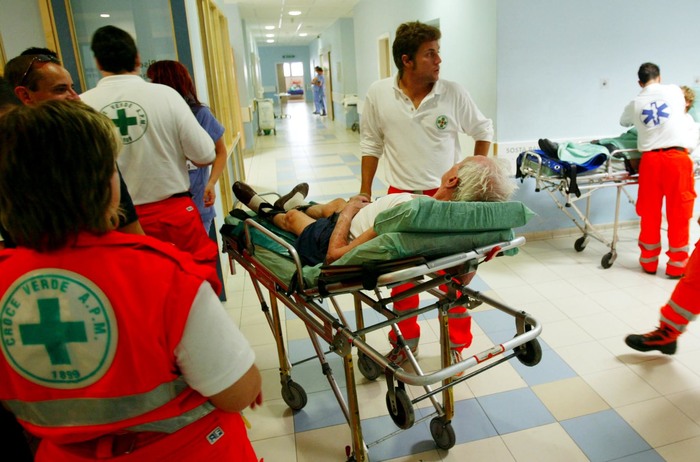Sami Biasoni is a doctor of philosophy from the École Normale Supérieure, lecturer at ESSEC, co-author of the essay
Français despite them
(L'artilleur, 2020).
In 2022, he will publish
Malaise in the French language
and then
The statistically correct
at Éditions du Cerf.
While the hashtag #saccageparis totals nearly 2 million occurrences in 2021 – making it one of the most used in France over this period – the City of Paris undertakes to communicate its “new doctrine” relating to the aesthetics of the capital. This initiative will result in the forthcoming publication of a four-volume manifesto dealing respectively with the theme as a whole ("introductory" volume), "road development and greening", "street furniture and new uses" and “buildings and landscape”.
These publications crown several months of work, consultations and reflection, and respond to the declarations of the first deputy mayor of Paris in charge of town planning and architecture, who already called for the deployment of eight tactical steps needed to – in his modest words –
“fix some things”
that were wrong.
Six months later, the intensity of the #saccageparis recriminations does not seem to be weakening and the inhabitants of the capital as well as its visitors are struggling to perceive what has changed.
Read alsoStreet furniture, street maintenance ... Highly criticized, the city of Paris has adopted a "manifesto for beauty"
We must return to the basic axioms of this "new" doctrine to understand what is wrong. One of the preparatory workshops for the manifesto thus specifically considered the question of
"gender in the public space"
where Emmanuel Grégoire for his part affirmed, in his recent presentation of the productions to come, that he was certainly attached to the aesthetics of the city, but that
"Paris [was] faced with a major challenge of transformation"
, that of the
"ecological transition"
. This rhetorical device, said to be adversarial, hardly misleads as to the underlying intention of the subject: aesthetics must be subordinated to the imperatives of the militant struggles defended by the Parisian executive. From then on, no valorization of Beauty in itself becomes possible; Beauty finds itself enslaved by moral and technical considerations. It is about a constrained, cramped Beauty, which,
in
the end, can no longer unfold over the long term.
It is enough to analyze the public speeches of the mayor of Paris to realize that despite the encouraging and proactive declarations of his deputy, one can legitimately fear that the future of urban planning in the capital will remain the poorly paved hell of good political intentions that we know. Thus, out of more than 114,000 tweets published since 2009, we can note less than ten evocations of the great historical reformers of the aesthetics of Paris, such as Davioud, Alphand, Guimard or Wallace. And on closer inspection, most of the time, it is not to celebrate their eternal contributions to the projected imagination of the capital, but to oppose them with risky attempts at "modernization": historic fountains painted in blue, connected media-kiosks and other “mikado” benches…
We learn, with satisfaction, that many of the urban planning heresies cited will now disappear;
in fact, they should never have happened.
Sami Biasoni
Under these conditions, it is objectively difficult to perceive the sincerity of the approach initiated, so much the absence of celebration of what founds our collective attachment to Paris is undermined, even literally flouted.
The manifesto evokes seven pillars of the beauty of the capital, beauty considered as
“monumental and human, harmonious, living, audacious, benevolent, vegetal, free and faithful”
. The process of personification used once again reflects the disinterest of the town hall for what really founds Beauty in Paris: order, symmetry, cleanliness, the subtle articulation between minerality and vegetation, colorimetric harmony and sustainability. Instead of that, we are now used to living in a saturated and visually polluted space where the leaky uritrottoirs are surrounded by disproportionate garbage cans on the road, where rubalise and tape maintain rickety signage elements, where one circulates between dirty concrete slides (GBA) and garish and rutted self-raising beacons, where few seants have ever deigned to land on the absurd "mushroom seats" installed at ground level,where disproportionate “coronapists” taunt busy travelers with their emptiness, where entire streets have been emptied of their activity by the desire to “appease” traffic. Everywhere: technical, provisional, superfluous collectivist playfulness. “Transition” cannot excuse everything, especially when it is constituted as the new normal. We learn, with satisfaction, that many of the urban planning heresies cited will now disappear; in fact, they should never have happened.with satisfaction that many of the town planning heresies cited will now disappear; in fact, they should never have happened.with satisfaction that many of the town planning heresies cited will now disappear; in fact, they should never have happened.
The management of the common aesthetic good engages. As Victor Hugo said in his text from his youth entitled Guerre aux démolisseurs,
“there are two things in a building: its use and its beauty. Its use belongs to the owner, its beauty to everyone, to you, to me, to all of us. Therefore, to destroy it is to exceed its right”
; this is also true for heritage town planning as a whole. Wouldn't it have been healthier and more honest to listen calmly and in a spirit of conciliation to the sincere grievances expressed by thousands of Parisians of all political persuasions, in love with their city, rather than considering them as seditious?
As long as we like to give precedence to the good-natured neo-progressive mantra of the inclusiveness of public space over its real adaptation to the equitable needs of everyone and over the requirement that the relentless promotion of Beauty requires, we will mislead.
Sami Biasoni
The little-attended "co-construction" workshops or the online consultation on Parisian aesthetics, hardly more popular (barely 2,000 votes) have obviously been used by certain very organized lobbies to impose their truncated visions of urban development, on the detriment to the interests of the greatest number.
This sham of characterized democratic expression will have been of little use in the end, as the revisions to be undertaken are obvious and require above all means and a real desire to act.
He is nevertheless happy that the method is evolving, it was necessary. It is still necessary that this time, the approach is sincere. In this regard, and in the current state of affairs, nothing is less certain. As long as we believe that automobile "evaporation" is a reality without harmful consequences for the lives of millions of users in the Ile-de-France region, that the car is an obsolete means of transport when it becomes electric and therefore silent, shareable, not transmitter and soon to be autonomous and that it is enough to claim the spirit of "modernity" to slip into the giant steps of an Eiffel, a Piano or a Chagall, we will not achieve anything constructive . As long as we like to give priority to the neo-progressive neo-progressive mantra of the inclusiveness ofpublic space on its real adaptation to the equitable needs of each and on the requirement that the relentless promotion of Beauty requires, we will be mistaken.







